Market Data
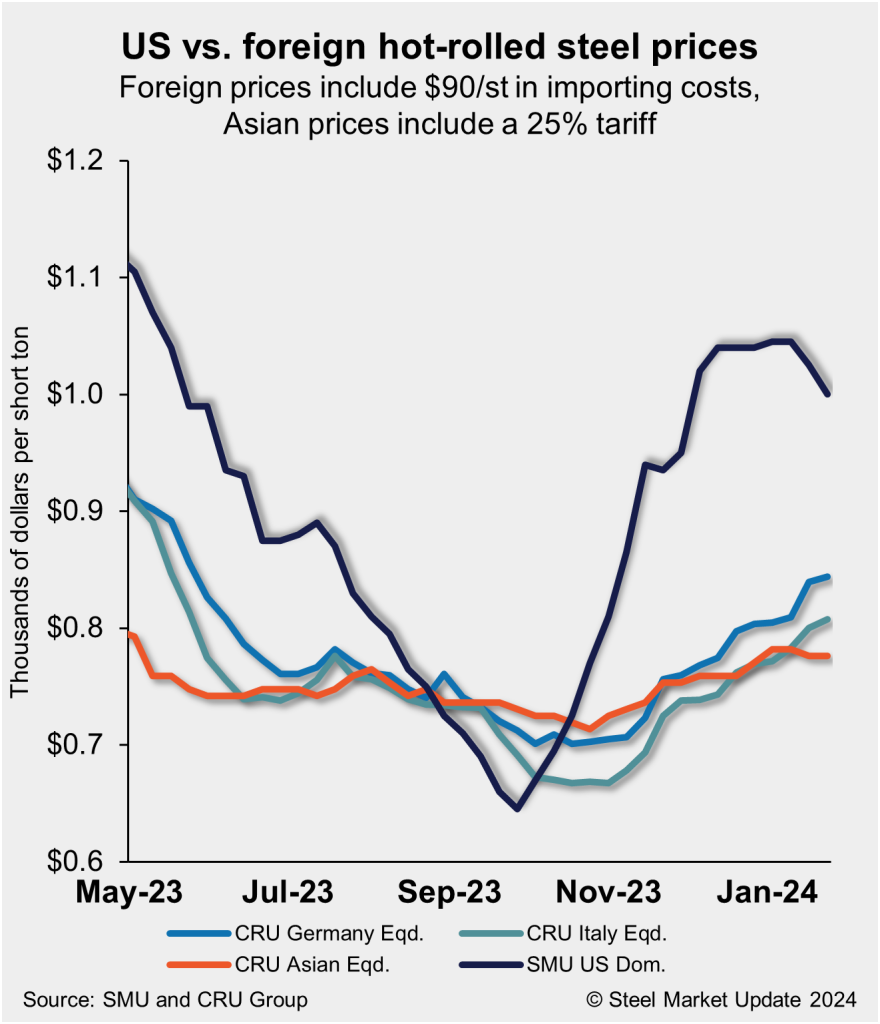
January 25, 2024
US premium over offshore HRC dips below $200/st
Written by David Schollaert
US hot-rolled coil (HRC) prices declined further this week, easing to their lowest level since late November. And while domestic tags remain notably more expensive than offshore product, the premium has declined as imported hot band tags have moved higher.
All told, US HRC prices are 19.1% more expensive than imports, a premium that is down from 21.4% from last week’s analysis and down from a recent high of 27% just one month ago. In dollars per ton terms, US HRC is now on average $191 per short ton (st) more expensive than offshore product, down from an average premium of $281/st a month ago.
This week, domestic HRC tags were $1,000/st on average based on SMU’s latest check of the market on Tuesday, Jan. 23. Prices had been largely unchanged since mid-December, but have begun moving lower and are now at their lowest point since early November.
Methodology
This is how SMU calculates the theoretical spread between domestic HRC prices (FOB domestic mills) and foreign HRC prices (delivered to US ports): We compare SMU’s US HRC weekly index to the CRU HRC weekly indices for Germany, Italy, and East and Southeast Asian ports. This is only a theoretical calculation. Import costs can vary greatly, influencing the true market spread.
We add $90 per ton to all foreign prices as a rough means of accounting for freight costs, handling, and trader margin. This gives us an approximate CIF US ports price to compare to the SMU domestic HRC price. Buyers should use our $90-per-ton figure as a benchmark and adjust up or down based on their own shipping and handling costs. If you import steel and want to share your thoughts on these costs, please get in touch with the author at david@steelmarketupdate.com.
Asian HRC (East and Southeast Asian ports)
As of Thursday, Jan. 25, the CRU Asian HRC price was $549/st, unchanged from the previous week. Adding a 25% tariff and $90/st in estimated import costs, the delivered price of Asian HRC to the US is approximately $776/st. The latest SMU hot rolled average for domestic material is $1,000/st.
The result: US-produced HRC is theoretically $224/st more expensive than steel imported from Asia. The spread is down just $25/st week on week (w/w) and down $57/st from a seven-month high of $281/st in late December.
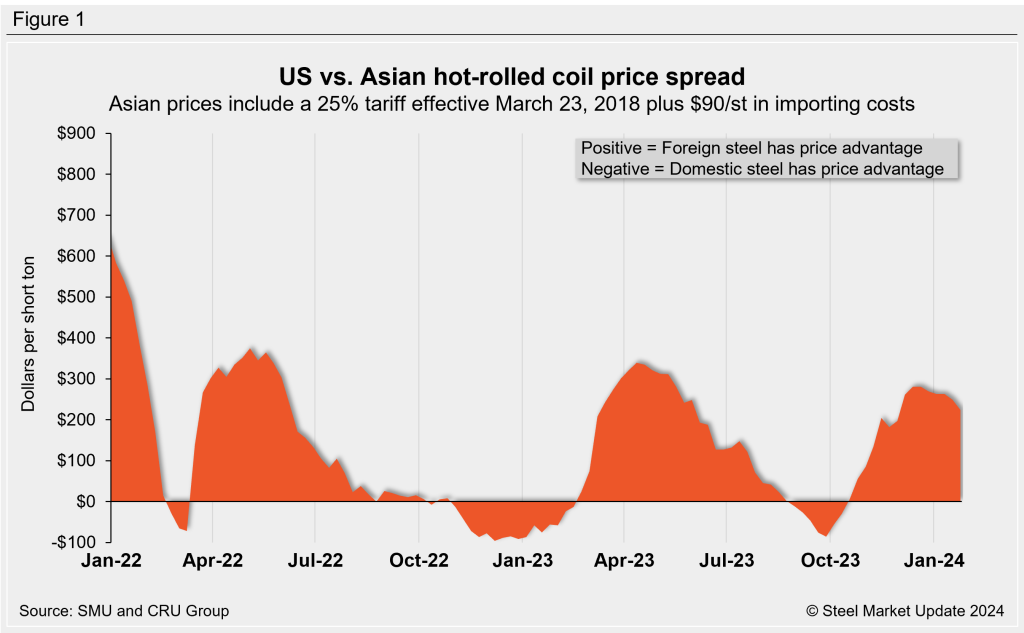
Italian HRC
Italian HRC prices were up $7/st to roughly $717/st this week. With that gain, Italian prices are up $140/st from a recent bottom of $577/st last October. After adding import costs, the delivered price of Italian HRC is in theory $807/st.
That means domestic HRC is theoretically $193/st more expensive than HRC imported from Italy. The spread is down from $225/st the week prior. In late September, in contrast, US HRC prices were $47/st cheaper than those for Italian hot band.
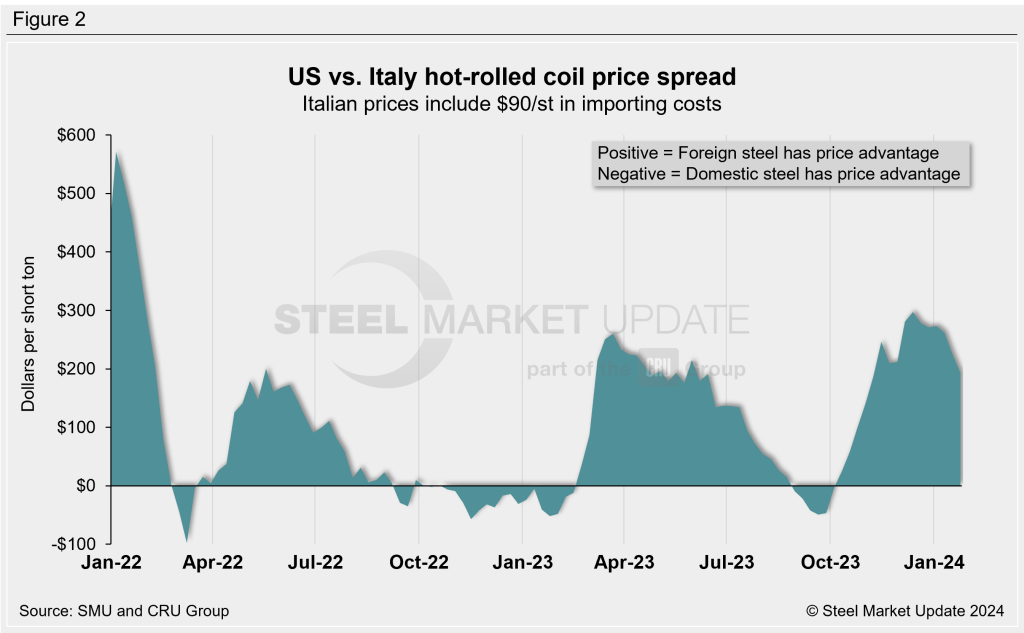
German HRC
CRU’s German HRC price increased by $4/st w/w to $754/st. After adding import costs, the delivered price of German HRC is in theory $844/st.
The result: Domestic HRC is theoretically $156/st more expensive than HRC imported from Germany. The spread is now $109/st below 2023’s widest spread of $265/st, which was recorded a month ago.
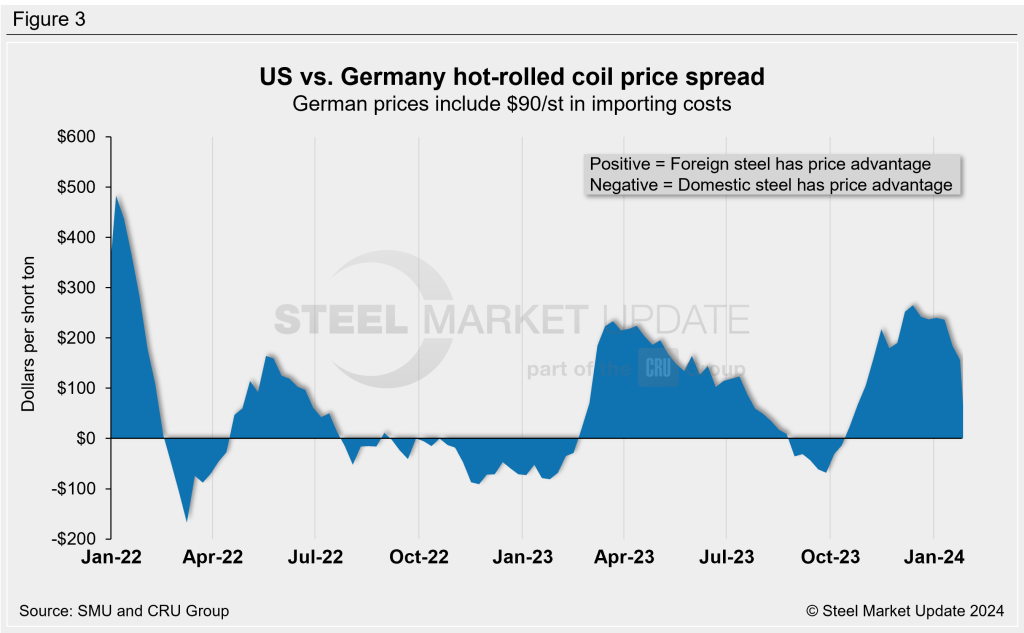
Figure 4 compares all four price indices. The chart on the right zooms in to highlight the difference in pricing from the second quarter of 2023 to the present.
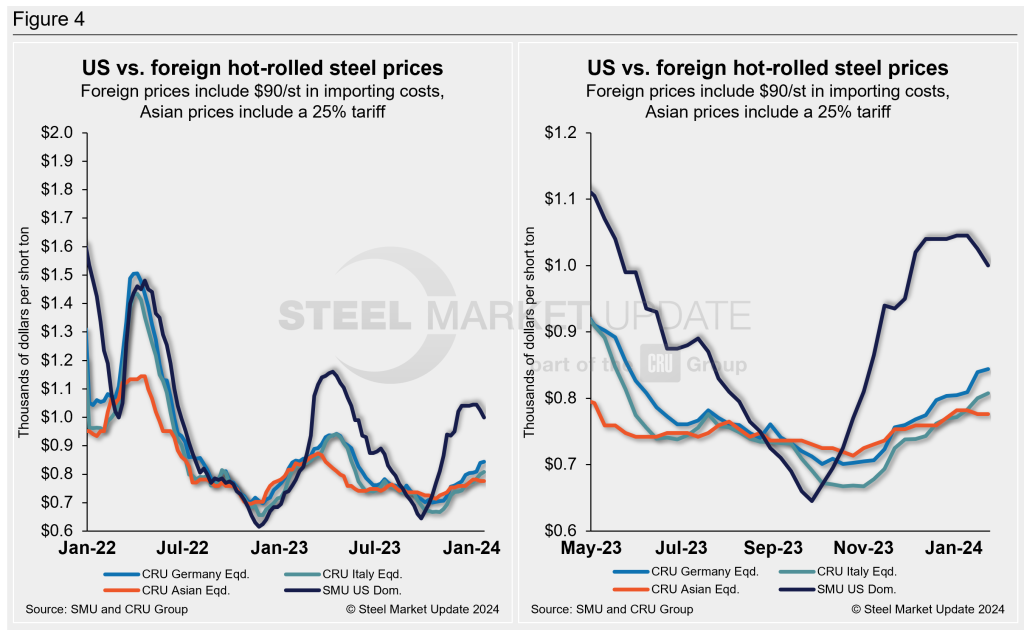
Notes: Freight is important in deciding whether to import foreign steel or buy from a domestic mill. Domestic prices are referenced as FOB the producing mill, while foreign prices are CIF the port (Houston, NOLA, Savannah, Los Angeles, Camden, etc.). Inland freight, from either a domestic mill or from the port, can dramatically impact the competitiveness of both domestic and foreign steel. It’s also important to factor in lead times. In most markets, domestic steel will deliver more quickly than foreign steel.
Effective Jan. 1, 2022, Section 232 tariffs no longer applied to most imports from the European Union. It has been replaced by a tariff rate quota (TRQ). Therefore, the German and Italian price comparisons in this analysis no longer include a 25% tariff. SMU still includes the 25% Section 232 tariff on prices from other countries. We do not include any antidumping (AD) or countervailing duties (CVD) in this analysis.







